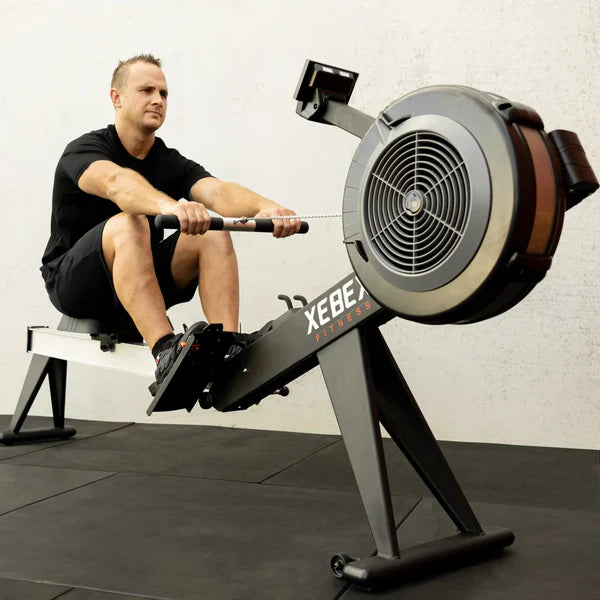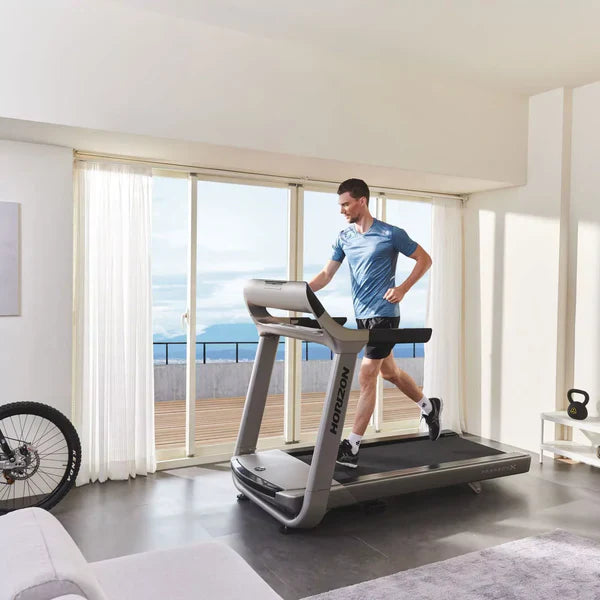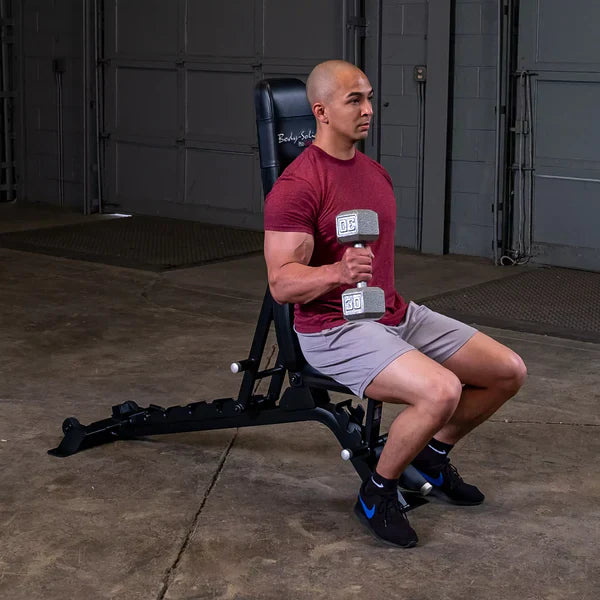If you’ve been building your home gym, you’ve probably noticed the dizzying array of equipment options available. From dumbbells to resistance bands, squat racks to kettlebells, it can be hard to know which pieces truly earn their place. One item that often flies under the radar—but deserves serious consideration—is the hex trap bar.
In this guide, we’ll break down why a hex trap bar could be a game-changer for your training, how to use it effectively, and how to choose the best hex trap bar for home gym setups. We’ll also dive into hex trap bar benefits and provide a hex trap bar workout routine at home to help you get started.
What is a Hex Trap Bar?
A hex trap bar, also known simply as a trap bar, is a hexagon-shaped barbell that allows you to stand in the center while holding the handles at your sides. This unique design changes the mechanics of many traditional lifts—particularly deadlifts—by creating a more neutral grip and shifting the weight’s center of gravity closer to your body.
Instead of loading your lower back as heavily as a straight bar deadlift, the hex trap bar distributes the load more evenly, making it more beginner-friendly while still challenging for advanced lifters.
Hex Trap Bar Benefits for Home Gym Users
Here’s why this piece of equipment is worth adding to your setup:
1. Joint-Friendly Lifting
One of the biggest hex trap bar benefits is the reduced strain on your lower back and shoulders. The neutral grip places your wrists, elbows, and shoulders in a more natural position, making it ideal if you have joint concerns or past injuries.
2. Versatility for Multiple Exercises
A hex trap bar isn’t just for deadlifts. You can perform shrugs, farmer’s carries, bent-over rows, squats, and even presses with the right attachments. That means more variety without cluttering your space with multiple machines.
3. Beginner-Friendly Deadlifts
Many beginners struggle with form during barbell deadlifts because of the forward bar position. With a hex trap bar, your hands are at your sides and your torso is more upright, making it easier to learn proper technique.
4. Increased Power Output
Research suggests athletes can generate more force with a trap bar deadlift compared to a straight bar deadlift. If you’re looking to boost strength, power, or explosiveness, this can be a key tool.
5. Compact and Space-Saving
If you’re training in a garage, spare room, or basement, space is always at a premium. A hex trap bar is relatively compact, especially compared to machines, and stores easily against a wall or in a rack.
Choosing the Best Hex Trap Bar for Home Gym Use
When shopping for the best hex trap bar for home gym, keep the following factors in mind:
-
Handle Options – Look for bars with dual handles (high and low) so you can adjust your lifting range of motion.
-
Weight Capacity – Even if you’re not lifting extremely heavy right now, choose a bar rated for at least 500–700 lbs to future-proof your training.
-
Finish & Grip – Knurled handles provide better grip, while a durable finish like black oxide or chrome can protect against rust.
-
Bar Weight – Standard hex trap bars weigh around 45–60 lbs, but some heavy-duty versions can weigh more.
-
Storage & Footprint – If you have tight space, check the overall length and width to make sure it fits.
Popular choices among home gym owners include open-ended hex trap bars for more exercise options, and folding designs that save space when not in use.
Hex Trap Bar Workout Routine at Home
Once you have your hex trap bar, it’s time to put it to work. Here’s a hex trap bar workout routine at home that covers full-body strength:
Warm-Up (5–10 minutes)
-
Jump rope or light cardio
-
Dynamic stretches (hip openers, arm circles, cat-cow stretch)
Main Workout
-
Trap Bar Deadlift – 4 sets of 6–8 reps
-
Focus on keeping your chest up and core tight.
-
-
Trap Bar Farmer’s Carry – 3 sets of 30–40 steps
-
Great for grip, traps, and core stability.
-
-
Trap Bar Squat – 3 sets of 8–10 reps
-
Stand tall, keep knees tracking over toes.
-
-
Trap Bar Overhead Press (if your bar allows) – 3 sets of 6–8 reps
-
Strengthens shoulders and triceps.
-
-
Trap Bar Shrugs – 3 sets of 12–15 reps
-
Builds trap and neck strength.
-
Cool-Down
-
Stretch hamstrings, quads, chest, and shoulders.
Tips for Getting the Most Out of Your Hex Trap Bar
-
Pair with Resistance Bands: Adding bands to the hex trap bar can increase resistance at the top of the lift, building lockout strength.
-
Progress Gradually: Even though the hex trap bar is safer for many people, don’t jump to heavy loads too fast.
-
Alternate with Barbell Training: Use the trap bar for lower-back-friendly sessions, then switch to a straight bar for variety.
-
Focus on Form First: The design makes good form easier, but still practice bracing your core and engaging your lats.
Why the Hex Trap Bar Stands Out in a Home Gym
Unlike bulky machines that serve only one purpose, the hex trap bar offers versatility, compactness, and accessibility for lifters of all levels. It bridges the gap between heavy strength training and joint-friendly movement patterns.
If your goal is to:
-
Lift heavier without aggravating old injuries
-
Build full-body strength with minimal equipment
-
Save space while still training effectively
…then the hex trap bar checks all the boxes.
Final Thoughts
The hex trap bar isn’t just another niche piece of gym gear—it’s a workhorse that can replace or complement several other tools in your home gym. From the beginner learning deadlift form to the advanced lifter chasing new PRs, the hex trap bar adapts to your needs.
When shopping for the best hex trap bar for home gym setups, prioritize durability, handle variety, and space efficiency. Once you’ve got your bar, try the hex trap bar workout routine at home outlined above, and you’ll quickly see why so many home gym owners swear by this piece of equipment.
In short: compact, joint-friendly, versatile, and powerful—the hex trap bar deserves a permanent spot in your training arsenal.





